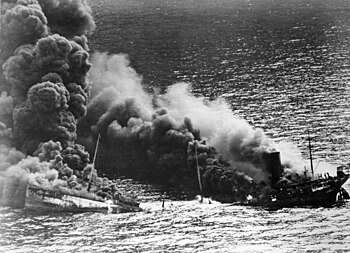My father, from late 1942 until 1946.
You might find these links of interest.
http://www.usmm.org/ww2.html
1 in 26 mariners serving aboard merchant ships in World WW II died in the line of duty, suffering a greater percentage of war-related deaths than all other U.S. services. Casualties were kept secret during the War to keep information about their success from the enemy and to attract and keep mariners at sea.
http://www.armed-guard.com/
http://www.marad.dot.gov/Education/history/ww2.html
I *think* the Z-card is a right-after-WWII document, based on lessons learned during the war.
You might find these links of interest.
http://www.usmm.org/ww2.html
1 in 26 mariners serving aboard merchant ships in World WW II died in the line of duty, suffering a greater percentage of war-related deaths than all other U.S. services. Casualties were kept secret during the War to keep information about their success from the enemy and to attract and keep mariners at sea.
http://www.armed-guard.com/
http://www.marad.dot.gov/Education/history/ww2.html
I *think* the Z-card is a right-after-WWII document, based on lessons learned during the war.




